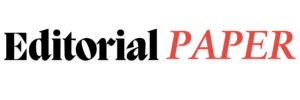Ever stumble across a word and feel an odd mix of curiosity and confusion? “Lepbound” is one such term—rarely used, often misunderstood, and surprisingly packed with meaning for anyone interested in the boundaries of science, language, and creativity. Though you won’t find it in everyday conversation (at least, not yet), lepbound represents a powerful intersection of ideas that challenge and inspire.
I’ve spent over fifteen years working with language, science communicators, and educators, and I’ve seen firsthand how a single word can open entire worlds of inquiry. In this post, we’ll unravel “lepbound”—exploring what it really means, its far-reaching roots, and how it continues to shape thinking across disciplines. Along the way, I’ll share personal observations, expert perspectives, and helpful resources for anyone intrigued by the allure of boundaries and the drive to surpass them.
What Is Lepbound? Definition and Origins
When experts toss around the term lepbound, they’re usually referring to two broad contexts: science—especially particle physics—and the evolving world of language itself. So where did this word come from, and why does it matter?
Scientific Origins: Born in the Heart of CERN
Lepbound made its debut in the research archives of CERN, the world-renowned European Organization for Nuclear Research in Switzerland. During the late 20th century, the Large Electron-Positron Collider (LEP) became ground zero for some of the most ambitious physics experiments in history. As physicist Dr. Anja Ritter notes, “Every new experiment at LEP pushed back the curtain of the unknown, forcing us to redraw our scientific maps.”
In particle physics, lepbound describes experimental limits set by colliders like LEP. When scientists hunt for new particles or forces, they often come up empty-handed in certain energy ranges—creating ‘bounds’ or regions where specific particles are unlikely to exist. These “LEP bounds” function as critical signposts:
- They show what we haven’t found, guiding future discoveries.
- They refine theoretical models, forcing adjustments as our understanding grows.
This interplay between data, theory, and possibility makes lepbound a cornerstone concept in modern physics. For a vivid primer, see the CERN retrospective on LEP’s legacy.
Linguistic and Cultural Roots: A Gateway to New Connections
Not all boundaries are physical. Linguists and writers have long leveraged unique terms to express connections, divisions, and the thrill of venturing beyond the obvious. Lepbound may stem from blending “lep-” (suggesting leap or boundary) with “bound” (connection, limit). The result: a word that dances along the edge between concrete limits and creative leaps.
In literature and communication, words like lepbound enable us to package complex meanings into compact, memorable expressions. If you’ve ever felt the frustration of explaining something for which no word exists, you’ll appreciate how lepbound fills a gap—acting as both a description and an invitation to curiosity.
Scientific Significance: Lepbound as a Compass for Discovery
In physics, the value of lepbound can hardly be overstated. The Large Electron-Positron Collider (1989–2000) changed humanity’s understanding of fundamental particles. Thousands of scientists pored over LEP’s petabytes of collision data, not always to find new particles, but often to exclude them. When an expected particle failed to show up at a given energy, its absence became scientifically valuable—a lepbound was set.
Why does this matter?
- It directs research toward promising frontiers—no sense searching for diamonds where the experts already dug up nothing!
- Lepbound constraints have prompted the design of even more powerful experiments, like the Large Hadron Collider (LHC) and the upcoming Future Circular Collider (FCC).
- They keep scientific models honest. As famed theorist Dr. Pierre Lamontagne puts it, “A theory that can’t face lepbound scrutiny isn’t fit for the 21st century.”
So, in a strange twist, what we don’t find often shapes tomorrow’s breakthroughs. That’s the paradoxical power of lepbound.
Linguistic & Cultural Perspectives: More Than Just a Scientific Term
Lepbound isn’t only for lab coats and particle detectors. In fact, you’ll notice that language evolves in fascinating ways when people encounter new frontiers. Words like lepbound enrich the toolbox of poets, philosophers, educators, and creative thinkers.
The Utility in Communication
Think of “lepbound” as a time-saving shortcut. It captures an entire concept—bounds set by careful inquiry—without forcing you to launch into a whole lecture. This sort of efficiency is one reason specialized terms like “webinar,” “byte,” or “event horizon” make their way from expert circles into mainstream conversation.
Sparking Curiosity & Inspiring Wonder
Let’s be honest—“lepbound” is mysterious. Its unfamiliarity invites us all to explore. Language expert Dr. Faith Seo observes, “Unusual words spark inquisition and break down barriers. The simple act of asking ‘What does lepbound mean?’ opens a doorway to discovery.”
Creative fields benefit, too. Writers and artists use such words to hint at hidden depth or to build themes around crossing—or respecting—boundaries. In this sense, “lepbound” contributes to culture as a muse and a metaphor.
Practical Applications: Lepbound in Action
You might wonder—does lepbound matter outside expert debates? Absolutely. Here’s how it finds real-world relevance:
- Physics and Engineering: Experimental teams use lepbound constraints while designing new detectors or shaping research proposals. The knowledge of what lies “outside the boundary” saves millions in research spending and guides ambitious projects toward real opportunities.
- Academia and Social Science: Terms like lepbound serve as powerful shorthand when exploring the boundaries of theories, societies, or systems. Whether writing a dissertation or mapping out a research study, academics often borrow technical terms to communicate complex ideas swiftly.
- Art & Creativity: Sometimes, the best creative work arises when we challenge boundaries. Visual artists, novelists, and designers may use lepbound—if not literally, then in spirit—to describe the process of stretching limits or exploring the uncharted.
- Education & Outreach: Educators know the importance of making abstract ideas relatable. Using lepbound as a teaching tool, they can help students grasp the importance of experimental limits, innovation, and critical thinking.
Future Implications: Why Lepbound Still Matters
Where do we go from here? The journey of lepbound is far from over.
- New Frontiers in Science: As future colliders like the FCC come online, lepbound constraints will evolve. Today’s boundaries may be tomorrow’s breakthroughs. According to the CERN Courier, “LEP’s legacy isn’t just in its discoveries, but also in every limitation that became the foundation for the next leap.”
- Linguistic Integration: Technical terms often migrate into mainstream language—think “quark” or “singularity.” Lepbound could soon symbolize the delicate edge between what’s possible and what’s still hidden, influencing not just science but also philosophy and pop culture.
- Human Aspiration: At its core, lepbound reminds us of a universal truth: we’re always pushing up against the limits of our knowledge. How we handle those limits—by questioning, challenging, or honoring them—shapes the future we build.
To borrow the words of Dr. Rita Santos, a physicist at CERN: “Every boundary we draw with lepbound thinking is also an invitation. It asks us—what lies beyond, and who will dare to look?”
Conclusion: Embracing Lepbound—Your Invitation to Discovery
To sum up, lepbound is more than a scientific measurement—it’s a mindset. It challenges us to recognize obstacles, trust the process of exploration, and celebrate the creativity that comes from venturing beyond the known.
Whether you’re a student, educator, scientist, artist, or lifelong learner, the concept of lepbound invites you to see each boundary not as a wall, but as a launchpad. In a world that’s always changing, the courage to explore the edge—armed with a word like lepbound—just might make all the difference.

